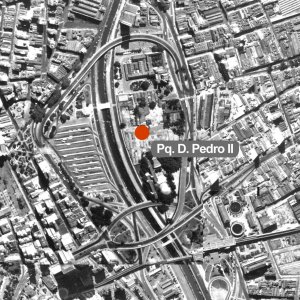
Parque D. Pedro is one of the most forceful examples of the urban and social
structural transformations of São Paulo city. It integrates an old portion
of the fertile valley of the Carmo, which suffered its first interferences in
the end of the XIX century, following a series of hygienic cleaning works in the
city. Conceived by French architect Bouvard, in 1911, it is marked the invisible
barrier historically established, until the subway implantation, between the high
city, the southwest, and lower part, the east/southeast. The few real estate investments
made in the area, as São Vito building, suffered to fast degradation, turning
into great vertical tenement houses, overpopulated and devoid of the basic services.
Gradually taken by circulation systems _ avenues, viaducts, buses terminals and
subway, Parque D. Pedro would finish for being entirely fragmented, resulting
in a gigantic road structure. This road entanglement aims more than simply transposing
an obstacle, the Tamanduateí river: it transposes the central area, connecting
all the regions. It can be said that it is the metropolis node of ways. Currently,
the area is occupied by a large bus terminal, ambulant commerce areas and still
forested spaces. The institutional public use is present, in the City Hall and
Casa das Retortas, where some municipal agencies are situated.